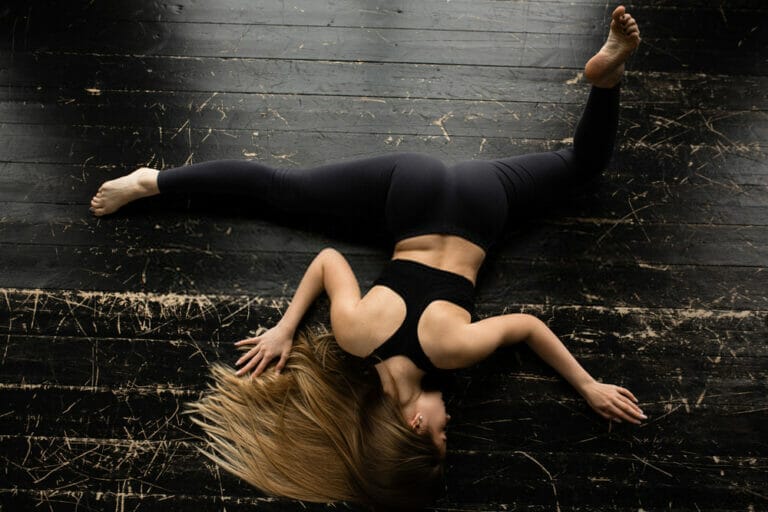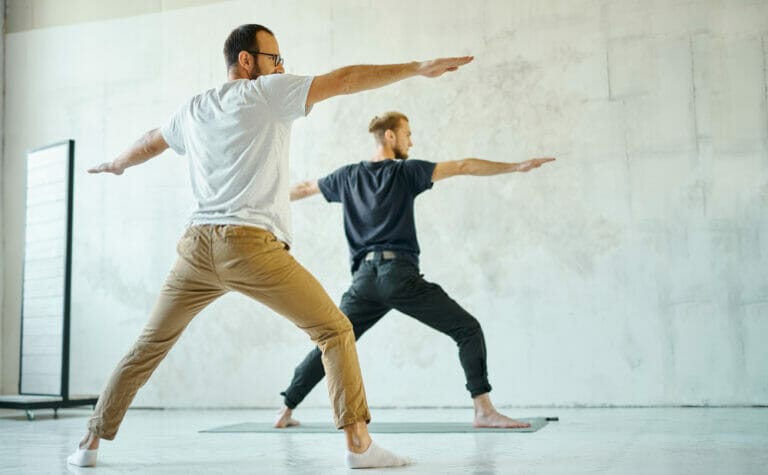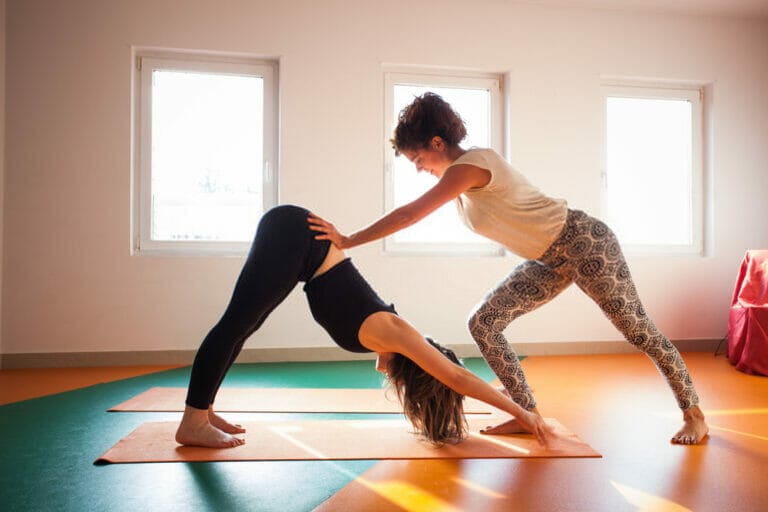How To Permanently Relieve Haemorrhoids (Piles) With Yoga
When the issue of piles is brought up, many individuals are ashamed to discuss it. But if you ignore the problem, it will flare and worsen, and the pain will become intolerable.
The good news is that if it is in its early stages, you can cure it naturally at home.
Haemorrhoids from constipation, straining during a bowel movement, taking certain laxatives, or wearing tight clothing can result in piles.
In addition, an inherited condition that affects the nerves of the anal canal also causes this condition.
One of the easiest ways to treat haemorrhoids is with sitz baths that are long baths taken in preparation for a bowel movement.
At least 1-2 sessions are required to cleanse the colon thoroughly, but this procedure may be all it takes to get rid of haemorrhoids due to its powerful cleansing qualities.
It is an excellent method for all kinds of haemorrhoids, even those that are mild.
Yoga has been used to treat piles for centuries, and it is an inexpensive and effective way to rid yourself of this complex disorder.
Of course, you can get relief from yoga without making any modifications to your diet, but if your piles are not related to constipation, increasing fibre in your diet will be helpful.
How Yoga Heals Piles
Reducing piles is an essential consideration in yoga because we want to do everything to prevent them from reoccurring. Not only piles is uncomfortable, but it also makes it difficult to move about.
Yoga can reduce fluid build-up in the tissues surrounding the haemorrhoids, making them less likely to develop into a more severe condition; this is called inflammation.
Yoga also increases body temperature, which causes the tissue surrounding the haemorrhoids to soften and shrink (known as oedema).
It is an integral part of the healing process, and it allows the haemorrhoids to heal more quickly. Yoga also reduces stress and anxiety, which improves blood circulation in the body.
Lastly, yoga increases muscle tone in the colon; this muscle activity pushes hard stools through the rectum and helps prevent constipation.
What to Do for Hemorrhoids
There are several ways to reduce piles with yoga, but we will stick with two of the most effective methods: yoga postures and a high fibre diet.
Yoga is a physical exercise that will encourage regular bowel movements, relieving constipation and swelling in the anal canal.
Yoga Postures for Hemorrhoids
Garland Pose (Malasana)
Garland posture is a widespread yoga practice for those who have piles. It prepares your intestines for a smooth and flawless stool passing action, relaxes your anal sphincter, and prevents straining.

You can do this position immediately before going to the restroom to relieve yourself.
Malasana is also beneficial to the entire pelvic floor. It extends your back, groin, and ankles to reduce piles discomfort. Furthermore, it aids with bowel movement and digestion.
Child’s Pose (Balasana)
This position stretches the lower back muscles and digestive systems, which might benefit when suffering from piles. In addition, it improves circulation around your anus, alleviates constipation, and relaxes your hips and legs.
A child's pose is said to massage your inside organs by boosting blood flow to inflammatory regions of your digestive and anal systems. As a result, it increases blood circulation, which can assist with discomfort and pain.
Head to knee pose (Janu sirsasana)
Janushirasana is a flexible yoga pose with several advantages. Janu sirsasana has exceptional benefits for those who have piles. This position will help to strengthen the muscles in your back and abdomen.
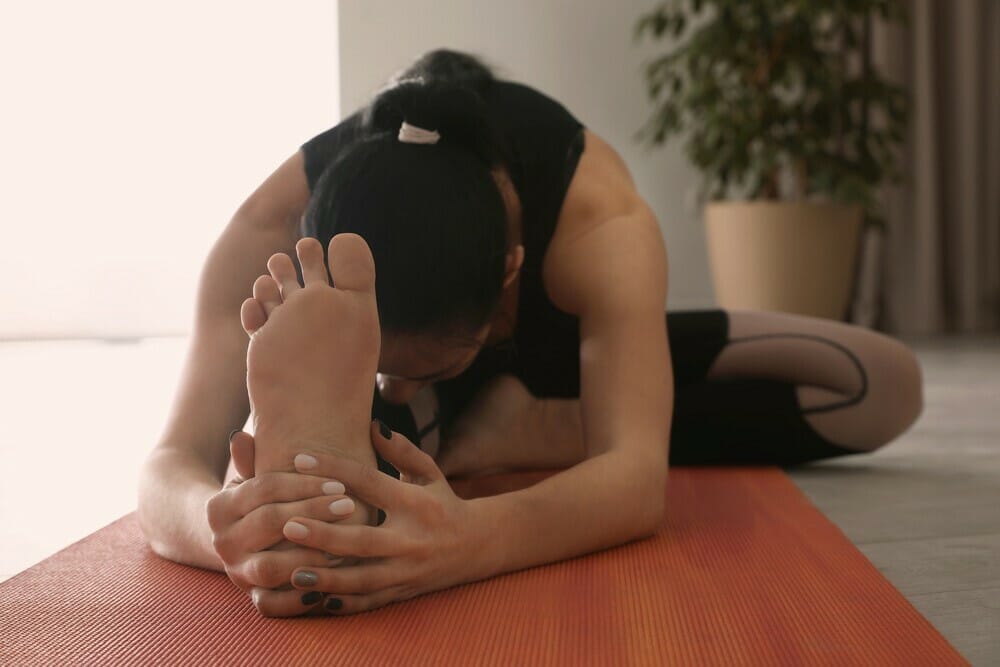
Furthermore, powerful abdominal and anal muscles are less prone to be damaged or irritated.
Janu sirsasana also promotes digestion, reduces belly fat, stimulates adrenal hormones, improves cardiovascular, kidney, and liver functions, and increases blood circulation. It also controls stress hormones, which help to manage anxiety levels.
Wind Relieving Pose (Pawanmuktasana)
Pavanmukhtasana is an excellent position for piles. Moreover, as the name implies, this posture is ideal for relieving gas, a possible piling hazard.
Pavanmukhtasana contracts and stretches your abdominal muscles. This movement extends your lower back and stimulates your pelvic floor muscles.
In addition, this asana compresses and develops your abdominal and anal tracts and organs so that it clears your system of any extra gas.
Half Lord of the Fishes Pose (Ardha Matsyendrasana)
Ardha Matsyendrasana is a one-of-a-kind position in terms of both appearance and advantages. It is the ideal asana for resolving any abdominal imbalance that gives rise to piles.
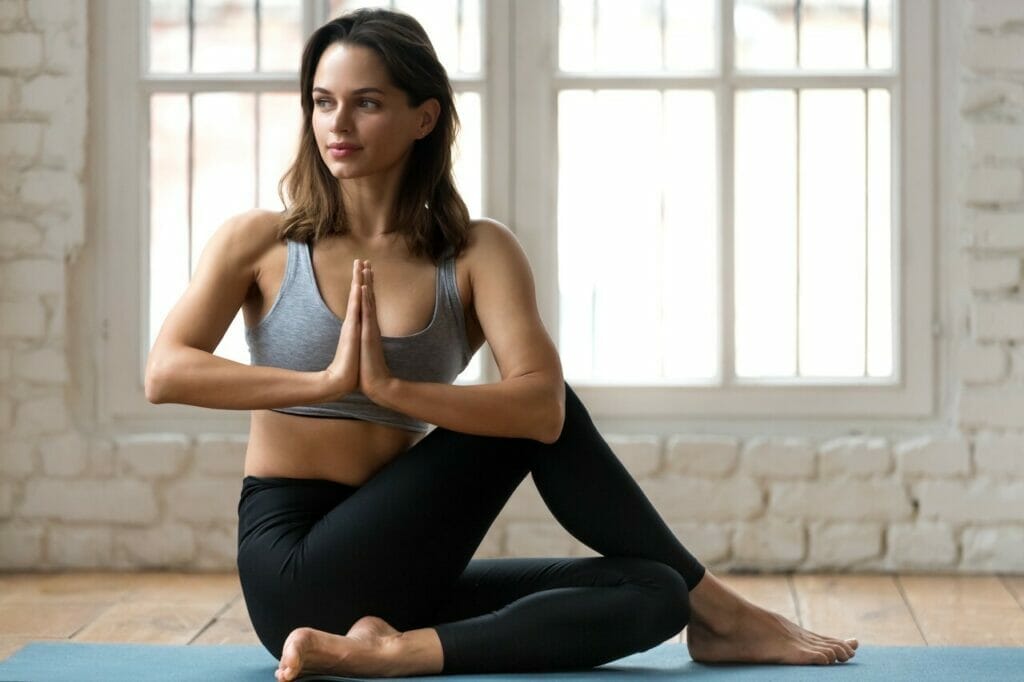
Ardha Matsyendrasana twists your abdominal muscles and spine, relaxes all digestive muscles, tones them, and decreases belly fat.
This posture extends the range of motion of your spine and develops the muscles that support it.
his yoga position will help improve your sitting posture and counteract the harmful consequences of a sedentary lifestyle. Finally, Ardha Matsyendrasana increases bowel movement in the lower abdomen, which helps to alleviate constipation.
Diamond Pose (Vajrasana)
Vajrasana is a simple but powerful position. This position is helpful for digestion and may be done after eating. Vajrasana stretches your buttocks and back, relieving stiffness and muscular damage.
It also lengthens your upper and lower abdominal tracts, allowing for improved digestion and bowel movement.
Vajrasana also increases blood circulation in the abdomen and pelvis. The diamond position is also recognized to be beneficial to the knee, ankle, and hip joints.
Root Lock Pose (Mulabandhasana)
Mulabandhasana is also known as the Root Lock Pose because Mula is a root, and Bandha is a lock. This piles yoga technique stretches the muscles in the belly and around the anal area.
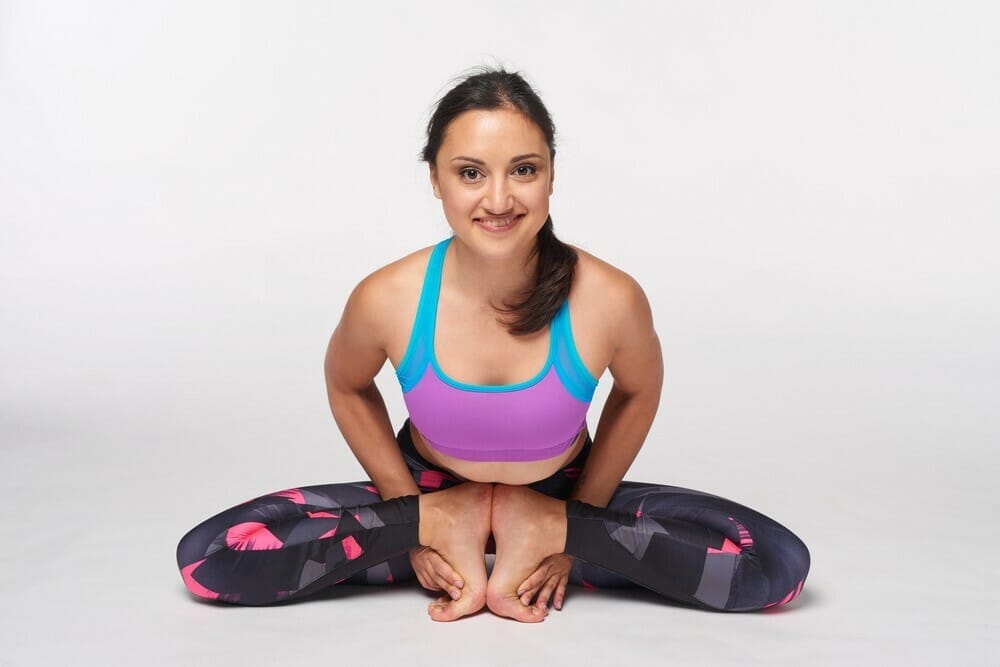
This asana is regarded as one of the finest Asanas for Piles because it engages the afflicted regions and cures them. Thus, yoga, when practised daily, helps treat piles.
Viparita Karani / Legs up The Wall:
Viparita Karani is one of the most incredible yoga poses for piles and haemorrhoids. It aids in the pain relief of the abdominal muscles.
In addition, it improves blood circulation and oxygen flow to the anal region, which can assist in treating piles.
You can perform viparita Karani with props such as cushions or blocks. It is possible to bring it down with the help of a wall. You should choose your way of doing this yoga posture based on your level of expertise.
Sarvangasana / Supported Shoulder Stand:
Sarvangasana is a yoga asana used to treat piles because it activates all of the muscles in the body, particularly those lining the anal area.
And Sarvangasana is a beautiful way to relieve tension. Pile-related tiredness and energy loss might occur.
Sarvangasana aids in the restoration of wasted energy, as well as enhance stamina and metabolism.
Both beginners and professionals may perform Sarvangasana. Yoga for Piles is an excellent approach to achieve long-term results with few adverse effects.
Padahastasana / Hand Under Foot Pose:
Padahastasana is an advanced level asana that treats discomfort. Beginners can attempt this asana for a short time to increase flexibility.
This pose necessitates strength and flexibility, which you may obtain via regular yoga practice. In addition, it works the muscles of the belly and the anal areas—this best yoga for piles problem aids in relieving pain and inflammation caused by haemorrhoids.
Anulom Vilom Pranayama:
Pranayama, like yoga, is particularly beneficial in the treatment of piles. Pranayama means “mental discipline,” It entails breathing practices that engage the brain while also improving oxygen flow to the body.

Anulom Vilom is an old method that changes how you live, with several health benefits. Pranayama for Piles is a safe approach to address your condition. It is one of the finest yoga asanas for piles.
Kapalabhati Pranayama
Kapalabhati employs rapid, repeated bursts of abdominal muscular contraction to efficiently release any tension in the area. It also stimulates the glands in the belly, resulting in balanced hormone secretion.
It also enables the bowel tracts in the lower abdomen in preparation for a blocked movement.
Conclusion
As you can see, several yoga asanas can treat piles. Those yoga exercises that help promptly are the best way to get rid of your piles. Yoga for Piles is very effective and safe.
Also, the extent of pain is dependent on how far gone the piles are. If you have just started to feel some pain or discomfort, then simple yoga exercises are enough to cure the problem. With regular practice, you will be double sure that you won't have to deal with this problem in the future!
FAQs
What Are The Causes of Piles?
There are many reasons for piles. Constipation, diarrhoea, and a low-fibre diet can cause piles. While some people develop piles due to excessive straining, others could complain of constipation, leading to piles because of the extra pressure.
If you are not used to sitting on the toilet for a long time, it can also be one of the reasons behind developing piles because you don't empty all your intestine. Piles may also develop because of obesity or being overweight.
How To Cure Piles Through Yoga?
You can treat piles through yoga and meditation. Yoga is a highly effective method for curing piles.
What Are The Symptoms of Piles?
Piles may come in different forms, but you need to be aware of some common symptoms of piles. It is the initial stage in which you feel a minor irritation when passing your stool.
You might feel like something is inside when you give your stool, and sometimes you might feel like passing gas even when there is nothing inside. There could be a pain when passing urine or stool.


